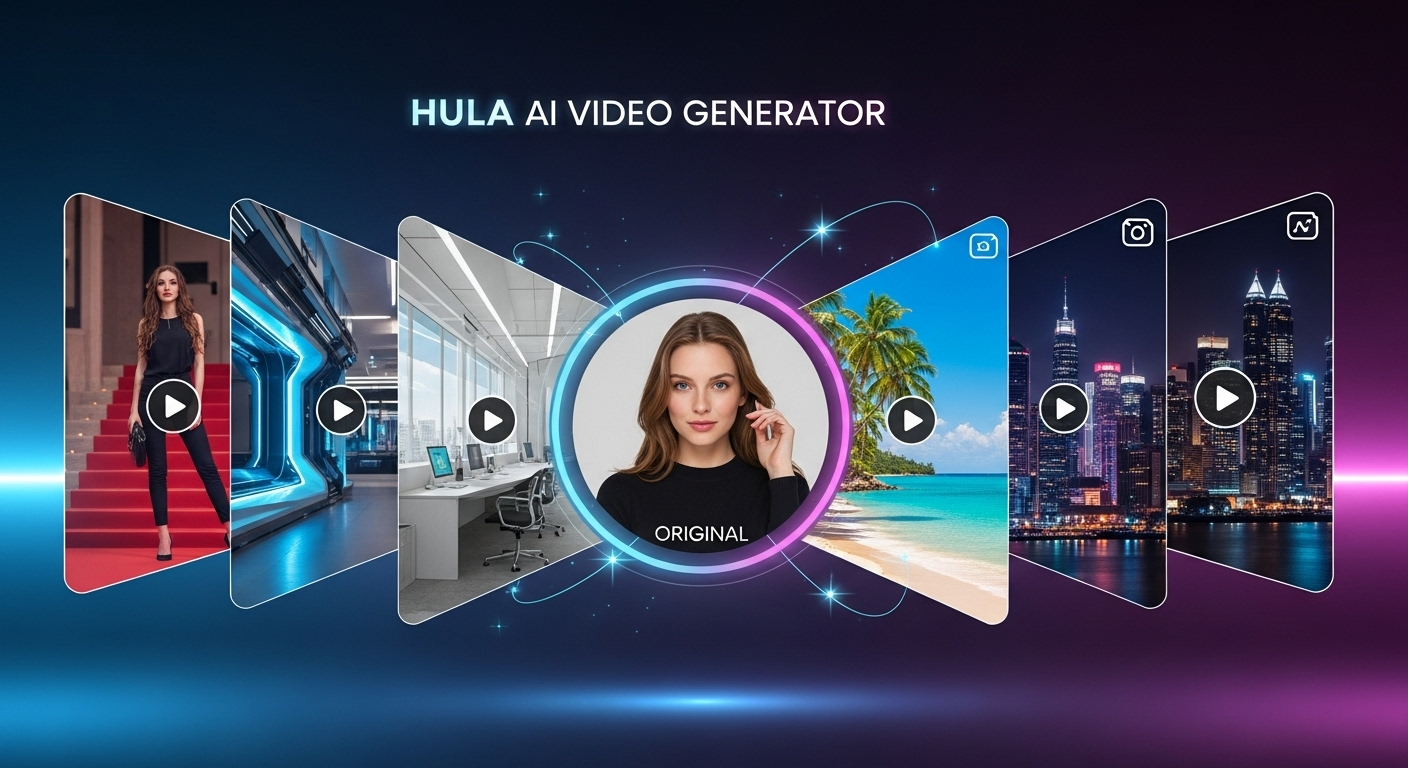
Hula AI Video Generator – Revolutionizing Video Content Creation in 2025
- Artificial Intelligence (AI)

The world of content creation, marketing, and accessibility is rapidly evolving, and at the heart of this transformation are AI voice generators.
In 2025, these tools are more sophisticated than ever, offering incredibly realistic and human-like voices that cater to a wide array of needs.
Whether you’re a video producer, podcaster, educator, or business professional, finding the right AI voice can significantly enhance your projects. This article explores some of the Top AI Voices for Real People in 2025.
Helping you navigate the options and select the best fit for your specific requirements. We’ll delve into the features, capabilities, and what makes these generators stand out in a competitive market.
ElevenLabs has established itself as a leader in generating ultra-realistic and emotionally expressive AI voices. It’s widely recognized for producing audio that is often indistinguishable from human speech.
Key aspects of ElevenLabs include its capacity for nuanced emotional delivery and support for various accents.

The platform utilizes deep learning to create voices that sound natural and engaging, making it a popular choice for everything from audiobooks and narration to marketing content. Many users praise its ability to capture subtle inflections and pacing.

Murf AI is a comprehensive AI voice generation platform favored by professionals for creating presentations, training modules, and voiceovers. It boasts an extensive library of voices across numerous languages and accents.
The platform offers robust tools for voice editing, allowing users to adjust pitch, speed, emphasis, and even add background music. Murf AI is designed to integrate smoothly into various workflows, including options for team collaboration.
Play.ht stands out for its high-quality voice synthesis, with a strong emphasis on speed and scalability, making it suitable for developers and those needing to integrate voice into applications. It provides a wide array of voices and language options.

This generator is noted for its realistic voices and the ability to create custom voice clones. It offers a generous free tier in terms of character allowance, making it accessible for users to test its capabilities.
Lovo AI, with its AI voice generator Genny, is a creative-friendly platform offering lifelike AI voices tailored for video creators, marketers, and educators. It features a substantial library of over 500 voices in numerous languages.

Lovo AI provides a user-friendly interface and extensive customization options, allowing users to fine-tune voice characteristics. It also includes features like an AI scriptwriter and a media library.
Speechify is a popular tool that transforms written text into audio with natural-sounding voices, widely used for productivity and accessibility. It’s known for making content more accessible for people with visual impairments or reading difficulties.

The platform supports various file types and offers features like adjustable reading speed and a wide selection of voices in multiple languages.
WellSaid Labs focuses on delivering studio-quality AI voices, primarily targeting enterprise and professional creative projects. They are known for creating highly realistic and natural-sounding voices suitable for corporate training, advertising, and product narration.
The platform allows for fine-tuning of voice characteristics to match specific project requirements and offers collaboration tools for teams.
Descript is a comprehensive audio and video editing platform that incorporates powerful AI features, including its “Overdub” voice cloning technology. It allows users to create a digital voice double to easily correct or add new audio by simply typing.

This tool is particularly useful for podcasters and video creators who need an integrated workflow for recording, transcribing, editing, and voice generation.
Synthesys is recognized for producing AI voices and even AI video avatars, catering well to commercial applications like website explainer videos and product tutorials. It leverages Text-to-Speech (TTS) and Text-to-Video (TTV) technologies.
The platform offers a range of natural-sounding voices and aims to simplify the creation of engaging media presentations.
Listnr is known for its wide range of AI voices and language support, making it a go-to platform for podcasters, bloggers, and video creators. It offers an intuitive interface for converting text into engaging, lifelike audio.
Resemble.ai specializes in hyper-realistic, emotional voice cloning and speech-to-speech conversion. It’s tailored for users who need nuanced vocal performances in real-time.

Kits AI is built specifically for music production, offering studio-grade singing voices, vocal blending, and custom voice training. It’s ideal for musicians and producers seeking creative control.

Powered by Google AI, this platform delivers realistic, natural-sounding voices, ideal for apps and enterprise solutions. It offers fine-tuning via SSML and strong language support.

Amazon Polly offers natural-sounding speech with Neural TTS and integrates easily into AWS environments. It’s great for developers and businesses needing scalable voice solutions.

iSpeech provides easy-to-integrate voice tech with support for TTS and voice cloning. It’s commonly used for IVR, apps, and e-learning tools.

Appy Pie’s AI Voice Generator is part of a broader toolset, helping marketers and creators produce voiceovers easily with no technical expertise required.

When selecting an AI voice generator, consider factors like voice quality and naturalness, the range of languages and accents, customization options, ease of use, and pricing to find the tool that best aligns with your needs.
Many platforms offer free trials or limited free plans, allowing you to test their capabilities before committing to a subscription.
Selecting the right AI voice generator from the Top AI Voices for Real People in 2025 depends heavily on your specific needs and priorities.
For content creators focusing on highly realistic and emotive narration for audiobooks or YouTube videos, ElevenLabs often stands out due to its natural speech patterns and voice cloning capabilities.
Businesses requiring professional voiceovers for training materials or presentations might find Murf AI’s extensive voice library, multi-language support, and collaborative features more aligned with their requirements.
If your primary need is integrating AI voices into applications or services, Play.ht’s robust API and scalability could be a deciding factor. For those who value a generous free tier to get started or for smaller projects, Play.ht and other services like TTSMaker offer substantial free usage.
Lovo AI (Genny) appeals to users looking for a creative suite with a wide variety of voices and additional tools like AI scriptwriting. Meanwhile, Speechify is an excellent choice for individuals seeking to improve productivity or make digital content more accessible.
Ultimately, the best approach is often to test a few shortlisted options. Many AI voice generators provide free trials or sample generations, allowing you to hear the voice quality and experience the user interface firsthand before making a commitment.
The landscape of Top AI Voices for Real People in 2025 offers a diverse and powerful set of tools. By carefully evaluating your needs against the strengths of platforms like ElevenLabs, Murf AI, Play.ht, Lovo AI, and Speechify, among others, you can find an AI voice generator that not only meets your requirements but also elevates your audio content to new levels of professionalism and engagement.